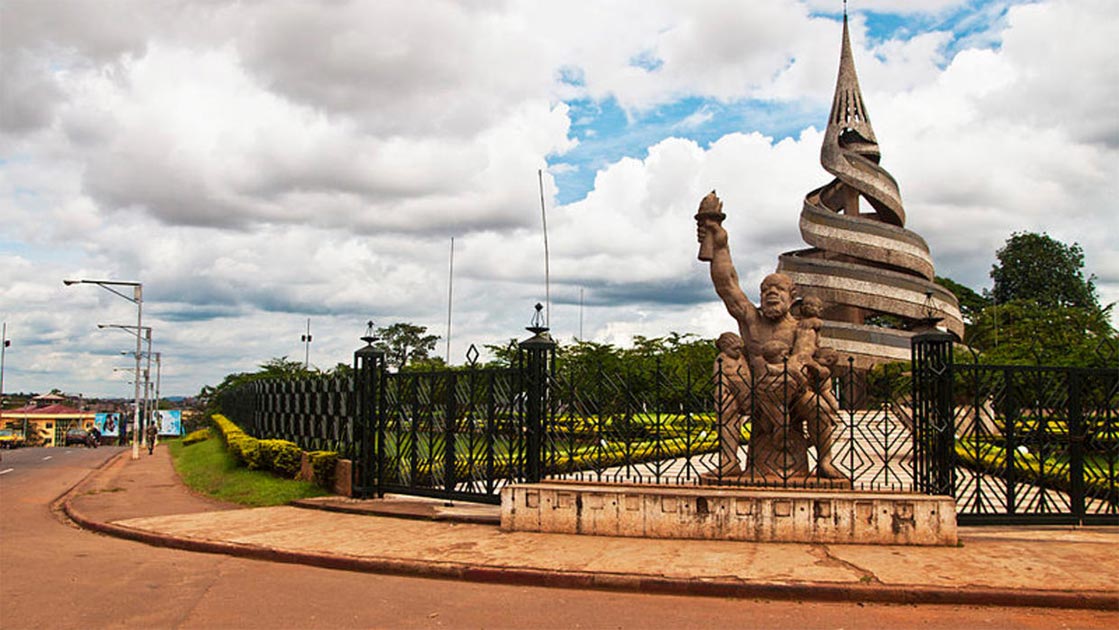Reunification Monument for a Divided Cameroon
Throughout Africa, many impressive monuments have been raised to commemorate the struggle for independence. Particularly striking is the Reunification Monument in Cameroon. It symbolizes the unification of the country after it was partitioned during the colonial period and celebrates the emergence of a new state onto the international stage.
The History of The Reunification Monument
Europeans first visited what is the modern nation of Cameroon in the 15 th century and the country suffered because of the slave trade. However, it was only in the 19 th century that the country saw serious European encroachments.
Backed by the Imperial government in Berlin in the 1880s, German traders established a post on the coast. They met with fierce resistance, but eventually Germany was able to carve out a considerable territory in what is today the state of Cameroon. The Imperial government left much of the governing of the colony in the hands of private businesses and the local people were brutally exploited.

German surveyor, Cameroon, 1884 (CC BY-SA 3.0)
After the defeat of the Germany in World War One, the League of Nations divided the German colony between the French and the British. They established colonial regimes in these areas and German influence ended. The victorious allies ended many of the more outrageous human rights abuses of the German colonial administration, although tensions soon emerged among the native population.
The parts of Cameroon that was under British rule complained of neglect and objected to the many migrants from Nigeria entering the territory. Rebellion against the colonists began in 1955 in the French-occupied areas. There was also agitation in British-Cameroon over the question of re-uniting with the French areas.
In 1960, French Cameroon became independent and the following year the British area voted for freedom. Initially, the two areas entered into a federation, but like many newly independent countries, Cameroon was racked by war and instability. Finally, an agreement to unifying the country was reached in 1972. The President of Cameroon, President Ahmadou Ahidjo, commissioned the Reunification Monument to celebrate this historic event. The monument was designed by Gédéon Mpando, a sculptor, who was born in Cameroon in 1932. It was commissioned in 1971, and it was completed in 1974.
- Lost in the Mists of Time: The Ancient Sao Civilization in Central Africa
- Simon Bolivar, The Liberator and Revolutionary Hero Who Freed South America
- Massive Monumental Cemetery in Eastern Africa Challenges Ideas of Monumentality

The sculptor, Gédéon Mpando, 1932 – 2013 (Osidimbea)
Despite the commitment to national unity, the two parts of the nation never integrated culturally or politically. At present, there is a separatist insurgency in Anglophone Cameroon, which has resulted in the loss of many lives. It seeks to create an independent state of the former British colony.
The Symbolism of the Reunification Monument
The monument is in Yaounde, the capital of Cameroon. The site is accessed by the main gate and near the entrance stands a massive statue that symbolizes the reunification of the nation. It is sculpted in the brutalist style of sculpture which was popular in countries under the influence of socialism in the 1970s.
At the center of the sculpture is a representation of an old man, who symbolizes the nation. He holds a torch which represents liberty and the independence of the nation. Surrounding the figure of the older man are several children who signify the coming together of the family of Cameroonians. Behind the statue there is a large structure that denotes national unity. This ingeniously designed conical building is made out of concrete pathways which form a spiral creating the cone-shaped structure. The blocks on this huge structure are inscribed with slogans promoting unity and celebrating diversity.

Detail of the Reunification Statue by Gédéon Mpando, Yaoundé, Cameroon (artnetworkconnexion)
At the bottom of the construction is a banqueting hall that was intended to host national events but is not in use at present. The structure and the sculpture are set in large gardens. In recent years the monument has become quite neglected and the once lush gardens are now overgrown.
Getting to The Reunification Monument
The monument is in the heart of busy Yaoundé and there are many public transport links to the site. No admittance fee is charged to enter and there is plenty of accommodation nearby. Visitors can explore the site on their own, but the monument is in an area with a great deal of anti-social activity.
Top image: Reunification Monument, Yaoundé, Cameroon Source: Ngnogue.Z
By Ed Whelan
References
Ardener, E. (1962). The political history of Cameroon. The world today, 18(8), 341-350
Available at: https://www.jstor.org/stable/40393427
Asombang, R. N. (2003). The future of Cameroon’s past: R NA. In Cultural Resource Management in Contemporary Society (pp. 36-46). Routledge. Nfi,
Available at: https://www.taylorfrancis.com/books/e/9780203208779/chapters/10.4324/9780203208779-7
Awasom, N. F. (2000). The reunification question in Cameroon history: was the bride an enthusiastic or a reluctant one? Africa Today, 91-119
Available at: https://www.jstor.org/stable/4187333?seq=1



















